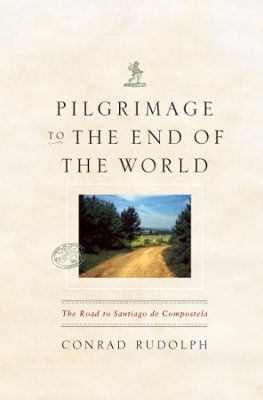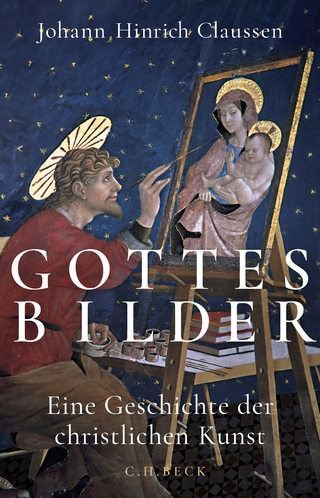
Pilgrimage to the End of the World
The Road to Santiago de Compostela
Seiten
2004
University of Chicago Press (Verlag)
978-0-226-73127-8 (ISBN)
University of Chicago Press (Verlag)
978-0-226-73127-8 (ISBN)
Art historian Conrad Rudolph follows the ancient pilgrim route to Santiago de Compostela. With anecdotes, travel tips and scholarly descriptions of medieval art, he offers a thoughtful guide to a remarkable journey across northern Spain one undertaken by thousands of pilgrims each year.
From Tibetan Buddhists at Jokang to Muslims at Mecca for the hajj, pilgrims across faiths and cultures travel thousands of miles - often by foot - to reach holy sites. Such journeys are considered proof of ultimate devotion, the most important act of an individual's life. The intense mystical and physical aspects of pilgrimages have recently sparked a modern revival, leading travelers in search of spiritual growth and physical challenge to embark on these sacred adventures. Pilgrimage to the End of the World takes the reader, via Conrad Rudolph's able eyes and feet, to the holy site of Santiago de Compostela, believed to be the burial place of the apostle James. Discovered around AD 812, it became one of the most important pilgrimage destinations for Westerners (after Rome and Jerusalem) and has recently received an influx of renewed attention since being named a UNESCO World Heritage Site. Today it is the second most popular Catholic pilgrimage center, having been visited by Francis of Assisi and Pope John Paul II, among others.
Rudolph made this passage himself, traveling the two and a half months and one thousand miles along the ancient pilgrimage route from Le Puy, in south-central France, to Santiago, Spain. Offering his perspective as a medieval art historian as well as a veteran traveler, Rudolph melds the ancient and the contemporary, the spiritual and the physical, in a chronicle of his travels to this captivating place. From anecdotes to travel tips for "the wise pilgrim" (routes to take, physical training required, what to eat, where to stay, what to bring, and even recommendations of other publications), this book is at once travel guide, literary work, historical study, and memoir. Sincerely and engagingly written, it will appeal to travelers, religious scholars, and historians - and will have you wanting to embark for Spain as you close it.
From Tibetan Buddhists at Jokang to Muslims at Mecca for the hajj, pilgrims across faiths and cultures travel thousands of miles - often by foot - to reach holy sites. Such journeys are considered proof of ultimate devotion, the most important act of an individual's life. The intense mystical and physical aspects of pilgrimages have recently sparked a modern revival, leading travelers in search of spiritual growth and physical challenge to embark on these sacred adventures. Pilgrimage to the End of the World takes the reader, via Conrad Rudolph's able eyes and feet, to the holy site of Santiago de Compostela, believed to be the burial place of the apostle James. Discovered around AD 812, it became one of the most important pilgrimage destinations for Westerners (after Rome and Jerusalem) and has recently received an influx of renewed attention since being named a UNESCO World Heritage Site. Today it is the second most popular Catholic pilgrimage center, having been visited by Francis of Assisi and Pope John Paul II, among others.
Rudolph made this passage himself, traveling the two and a half months and one thousand miles along the ancient pilgrimage route from Le Puy, in south-central France, to Santiago, Spain. Offering his perspective as a medieval art historian as well as a veteran traveler, Rudolph melds the ancient and the contemporary, the spiritual and the physical, in a chronicle of his travels to this captivating place. From anecdotes to travel tips for "the wise pilgrim" (routes to take, physical training required, what to eat, where to stay, what to bring, and even recommendations of other publications), this book is at once travel guide, literary work, historical study, and memoir. Sincerely and engagingly written, it will appeal to travelers, religious scholars, and historians - and will have you wanting to embark for Spain as you close it.
Conrad Rudolph is professor of medieval art and chair of the art history department at the University of California, Riverside. This is his fourth book.
| Erscheint lt. Verlag | 19.5.2004 |
|---|---|
| Reihe/Serie | Culture Trails - Adventures in Travel |
| Sprache | englisch |
| Maße | 14 x 20 mm |
| Gewicht | 170 g |
| Themenwelt | Reisen ► Reiseberichte ► Europa |
| Religion / Theologie ► Christentum ► Kirchengeschichte | |
| Religion / Theologie ► Christentum ► Liturgik / Homiletik | |
| ISBN-10 | 0-226-73127-8 / 0226731278 |
| ISBN-13 | 978-0-226-73127-8 / 9780226731278 |
| Zustand | Neuware |
| Haben Sie eine Frage zum Produkt? |
Mehr entdecken
aus dem Bereich
aus dem Bereich
von Athanasius bis Gregor dem Großen
Buch | Softcover (2024)
C.H.Beck (Verlag)
CHF 18,90
eine Geschichte der christlichen Kunst
Buch | Hardcover (2024)
C.H.Beck (Verlag)
CHF 44,75


